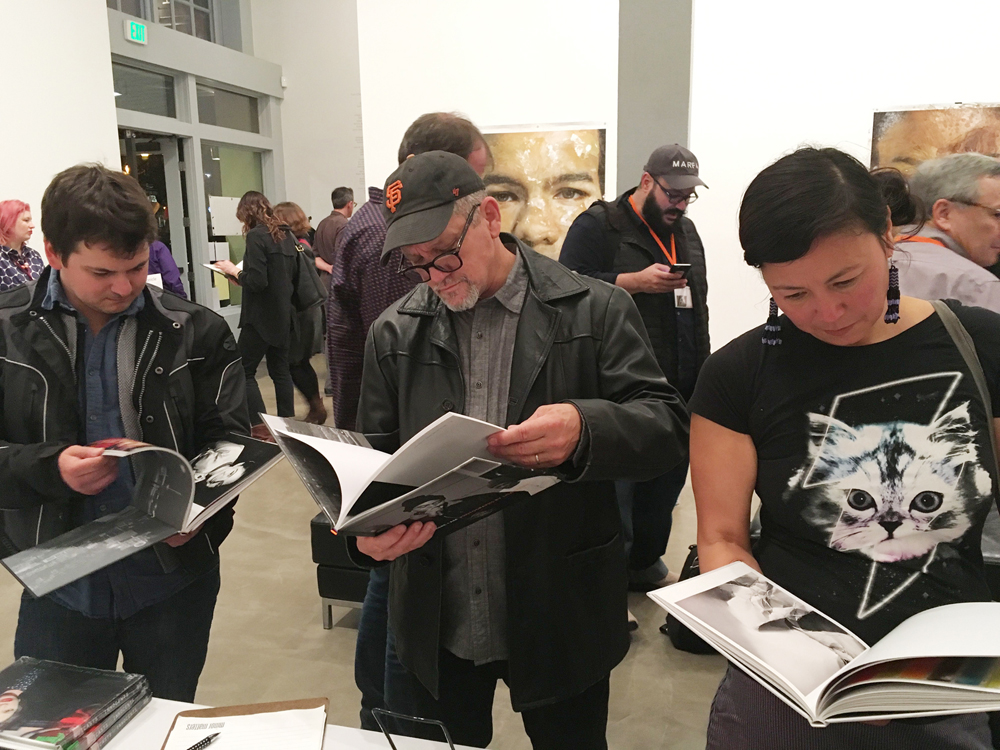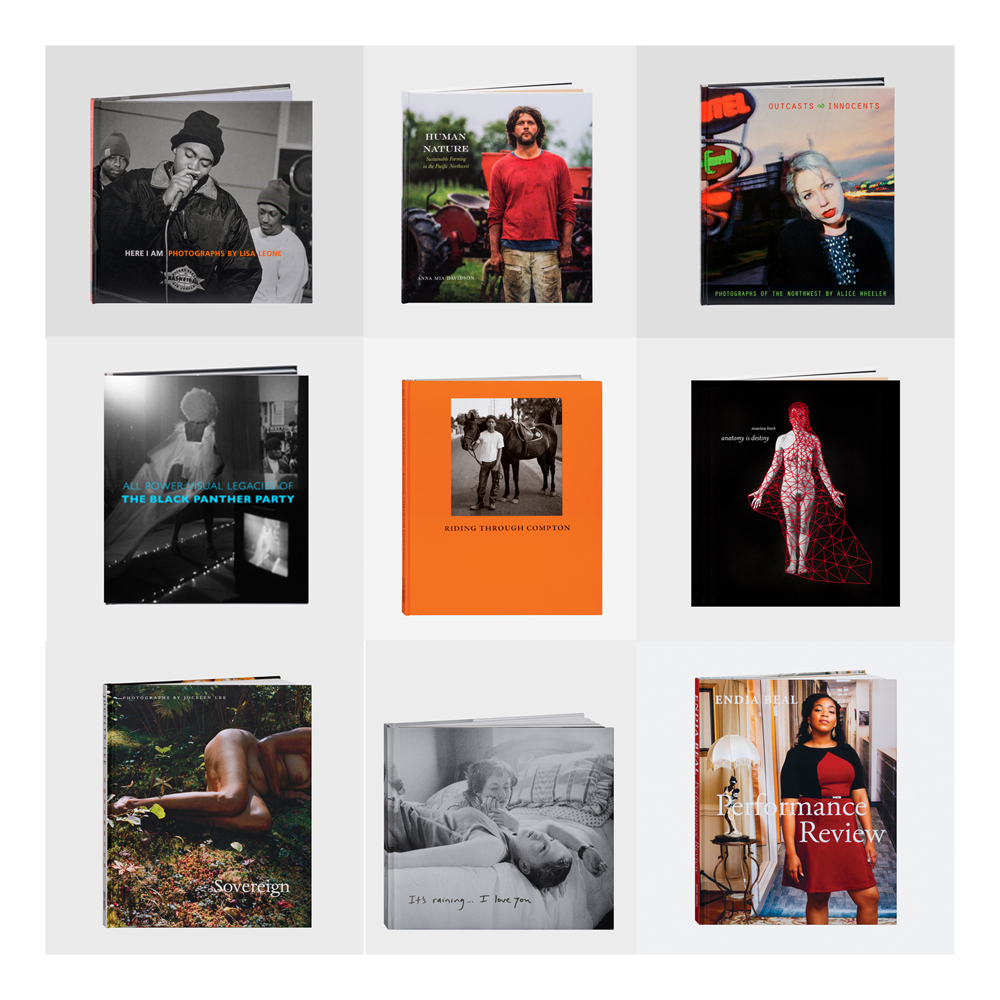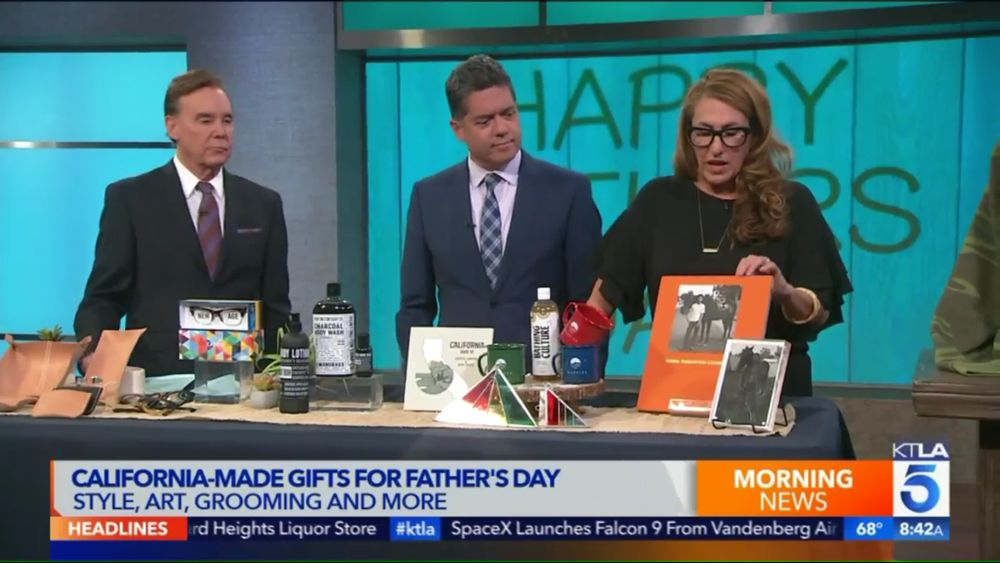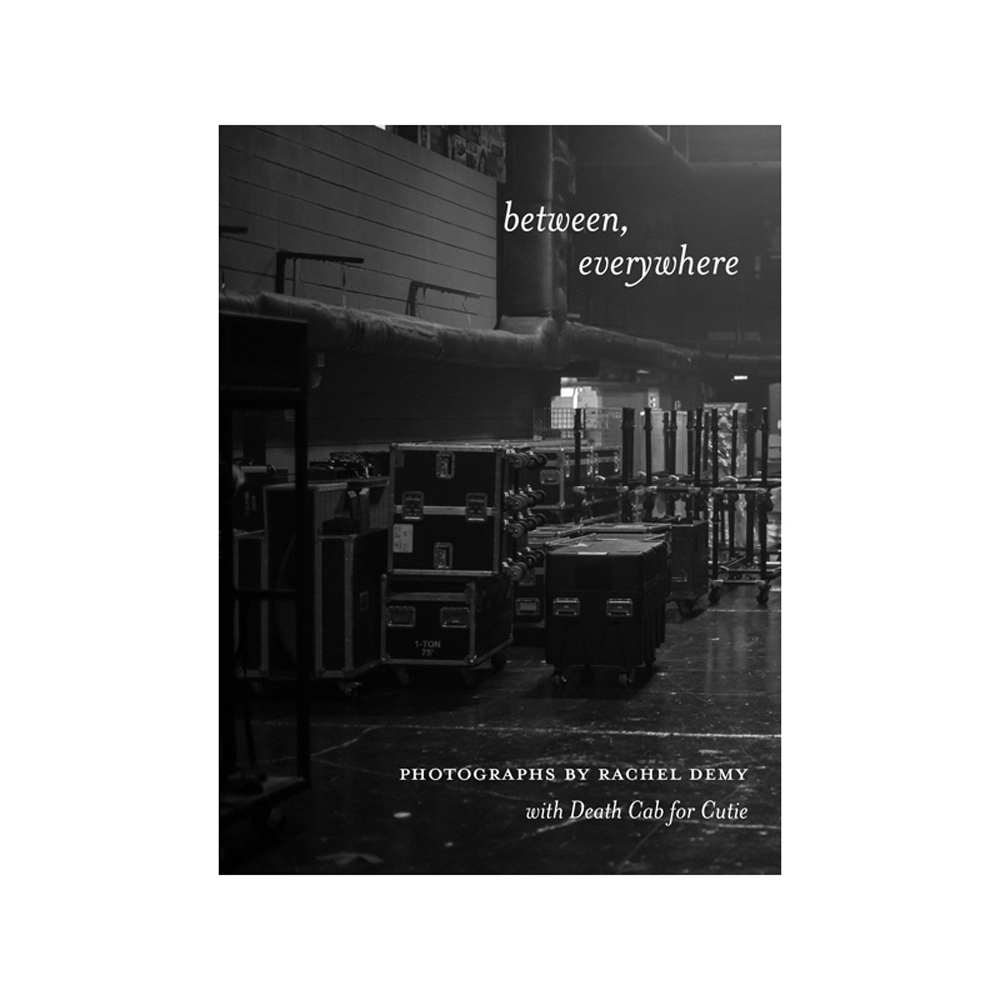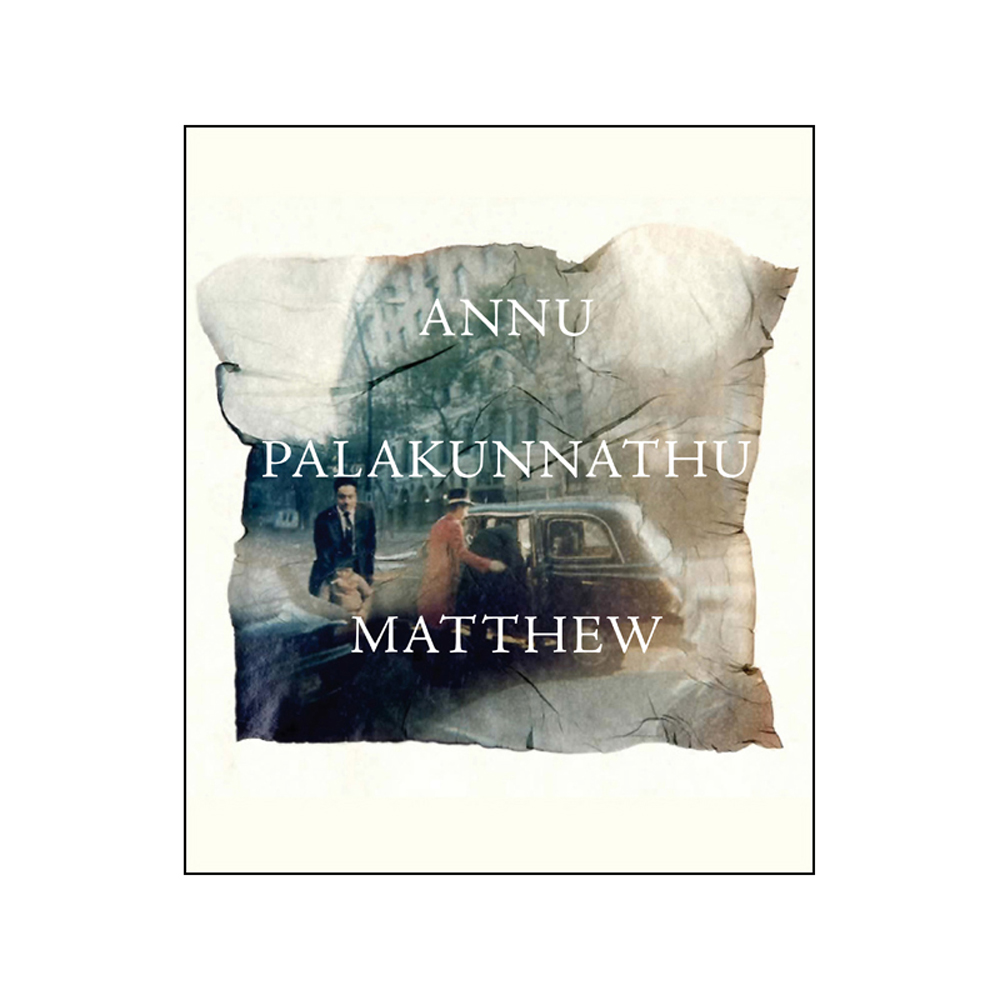Publisher’s Spotlight: Minor Matters Books

Signing our first publishing agreement, 2013. Left ot Right: Michelle Dunn Marsh, artist Joe Park, Minot Matters co-founder Steve McIntyre. Photographed by Deborah Gassner.
These past months have been all about books on Lenscratch. In order to understand the contemporary photo book landscape, we are interviewing and celebrating significant photography book publishers, large and small, who are elevating photographs on the page through design and unique presentation. We are so grateful for the time and energies these publishers have extended to share their perspectives, missions, and most importantly, their books.
Founded in 2013, Minor Matters Books is a collaborative publishing platform, making books through the engagement of our international audience. They highlight underrepresented voices in contemporary art, and preserve our present for the future through publishing their work. At Minor Matters, they recognize that significant art and ideas may stay on the fringes without the support of a community. Like us. With you. Everyone who buys their books in pre-sales is listed as a co-publisher—we’re making books together.
“We develop the concept, editorial direction, and design of art books in collaboration with our authors, then present them to our international audience with the intention of completing 500 pre-sales over a maximum six-month cycle. The people who pre-purchase, the book’s co-publishers, are acknowledged by name within the book. Finished books are shipped to our co-publishers upon completion (no more than a year from the book’s initial launch on the site), and are available through our site and through our independent retailers.”
Aline Smithson is in conversation with Publisher Michelle Dunn Marsh.
Follow Minor Matters Books on Instagram: @minormattersbooks
 What is your mission as a publisher?
What is your mission as a publisher?
Minor Matters is a collaborative publishing platform, making books together with our international audience. We look for projects that speak to the surface of life today, bringing insight and cadence to the worlds we occupy. Our pre-sales process, requiring a set number of copies purchased before we move a book into print, actively engages the buying audience in determining the books we produce.
What was the first book you published, and what did you learn from that experience?
We launched Minor Matters in 2013 with five authors—Larry Fink, Eli Hansen (working in glass), David Hilliard, Joe Park (oil painter), and Anna Mia Davidson. Of those, we published David Hilliard and Joe Park in 2014, added Lisa Leone, who we also published in 2014, and published Anna Mia Davidson in 2015.
Our base model—aiming to pre-sell 500 copies at $50 retail to determine that there was a meaningful audience for the book—was just a hypothesis when we started. So we learned a ton on our first books in terms of what motivated people to buy (the author’s belief in and desire for a book), and what didn’t (events during the pre-sales process). Press from traditional outlets (magazines and newspapers) was particularly important then, and brought our books and our model to wider audiences.
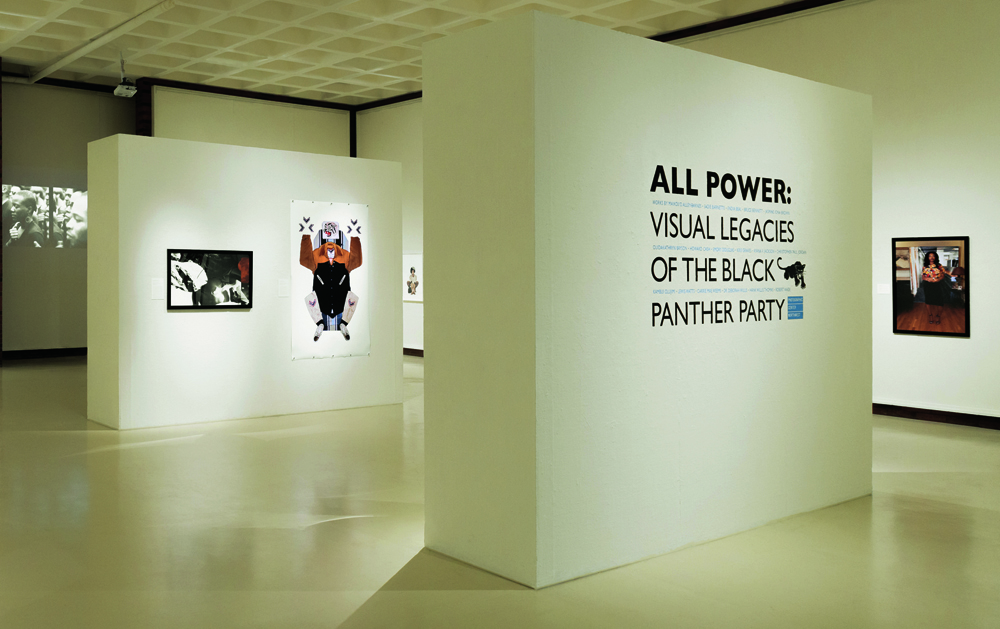
© Joe Freeman, installation of “All Power: Visual Legacies of the Black Panther Party,” drawn from the Minor Matters book of the same name, Sarah Spurgeon Gallery, Central Washington University, Ellensburg, WA, 2018
How big is your organization?
We are a team of two, with occasional interns. Steve McIntyre is co-founder and our platform chief—he handles all aspects of screen-based technology, from the design, presentation and maintenance of our website to our backend banking, our mailing list, our newsletters, and fielding questions and comments. I acquire projects, develop the marketing materials, design and edit the books, oversee print production, and publicly present our company and our books. We also work closely with a roster of experts for proofreading / developmental editing, image separations, printing, packaging and fulfillment, and their engagement is absolutely essential to the books we produce and distribute throughout the world.
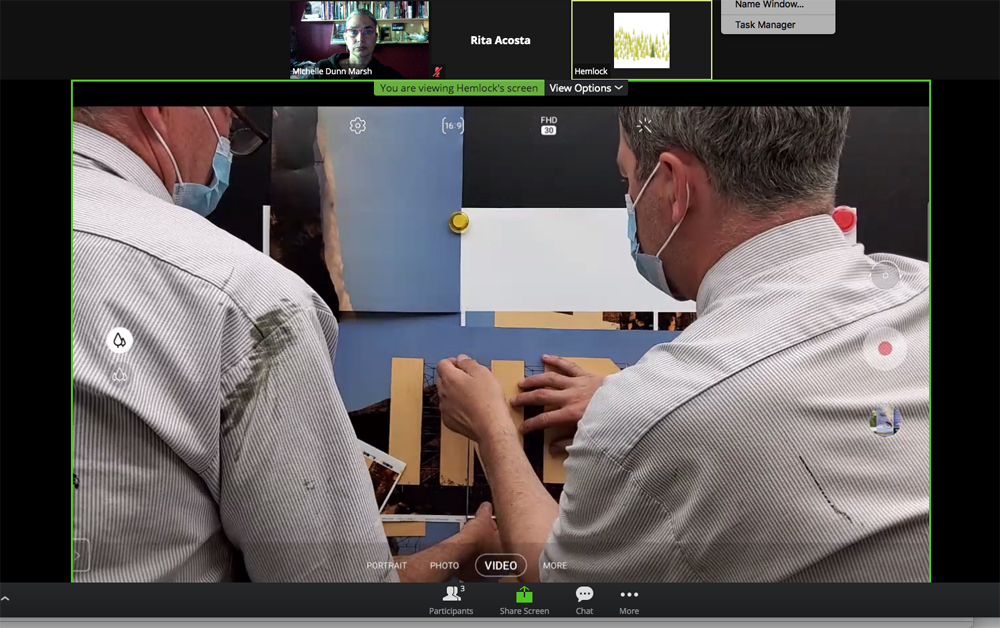
Conducting a virtual press check with Hemlock Printers, Burnaby, British Columbia for Nicholas Galanin’s Never Forget (Minor Matters, 2021).
What are the difficulties that publishers face?
The business of publishing has undergone tremendous change in the last thirty years. Some research and reference publishers, like the one my father worked for from the 1960s to the 1980s, were in the next two decades completely displaced by advancements through online technologies, making the form of the book itself obsolete to the data they provided. All publishers, like other product producers, have faced disruptions in how consumers access goods. Today, specific to the visual books we produce, I am observing a “third wave” of industry disruption from screen-based and digital tools. I saw the shifts to graphic design in the late 1980s and early 1990s when “desktop publishing” was introduced; I saw the impacts to photography with the proliferation of digital cameras and desktop color printers in the early 2000s. And now, with the swell of changes to both of those industries, I am seeing the logical progression of change hit visual publishing. I attribute some of this to the radical developments in print-on-demand, and some of it to visual books being a rather tiny area of publishing as a whole. Because it was relatively small, it was able to cling to its traditional manner of functioning a bit longer than other arenas. But no longer—many have entered its arena and are producing books as an art practice as well as a business.
I would say one of our greatest difficulties is the same as it has always been—connecting consumers to our products. The purchasing audience for visual books has always been small, around 3,000 people annually over the last forty years. The number of visual books being produced and presented for sale has escalated exponentially, which is not surprising given the vast number of images being taken. We are living in the next phase of the “DIY” and “me” generations. Everyone is taking their own pictures and making their own books, and that is, in some ways, really exciting and affirming because new opportunities exist to do so. You can, pretty affordably, make a book for an audience of one, or five, or ten. Will we be able to sustain the interests of five hundred or a thousand people in the books we’re producing simultaneous with that? Will those who get excited about making their own books still be inspired by the work and publications of others, and invest in them? Perhaps more relevant, can we grow the number of people buying books to better match with the number of people making them?
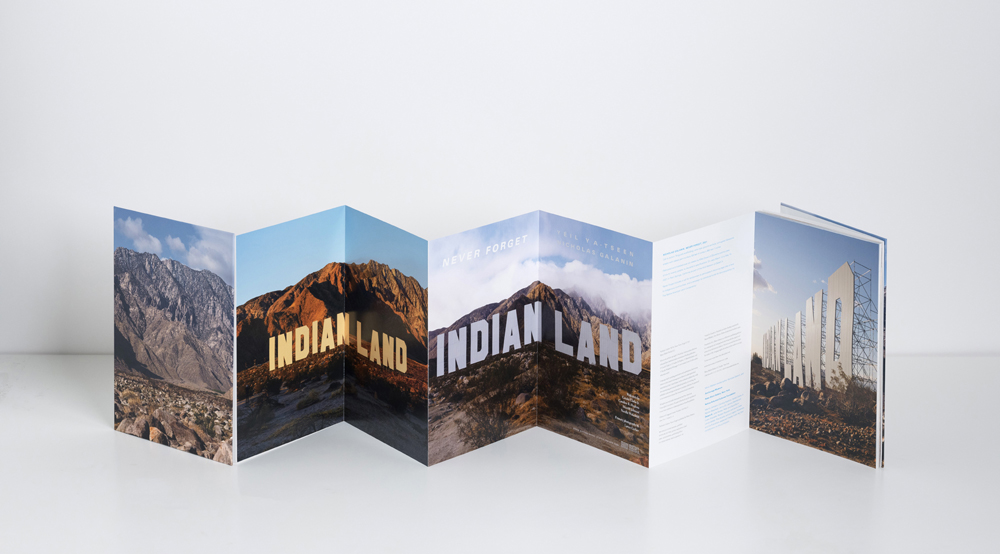
© Canh Nguyen, Nicholas Galanin’s Never Forget (Minor Matters, 2021) 06 Title page of the first edition of The Rolling Stones 1972: Photographs by Jim Marshall (Chronicle Books, 2012 / new edition 2022). Photograph by Lincoln Potter
Are there any publishing projects that have been particularly meaningful to you?
All of them! : ) About half our list has been “first books” with artists, and that is particularly special. We’ve done a few multi-artists books—All Power: The Visual Legacies of the Black Panther Party, Seeing Being Seen: A Personal History of Photography, and our most recent release, Among Peers: The United States of Young Photographers. Those take a different kind of coordination, permissions clearances, etc., and are exceptions to the monographs we usually develop. All three have been timely and have fulfilled our goal to make books that both reflect the moment, and serve as vessels of history for the future.

Title page of the first edition of The Rolling Stones 1972: Photographs by Jim Marshall (Chronicle Books, 2012 / new edition 2022). Photograph by Lincoln Potter
What upcoming projects are you excited about?
Certainly the fall 2022 books now wrapping their pre-sales processes: Between, Everywhere by Rachel Demy, a book that has the exciting distinction of achieving its pre-sales goal in less than 24 hours! Exploring life on tour, and the dualities of music performance and the slog of the behind-the-scenes journey, this book reminds me, in the midst of my heavy contemplation of the challenges of our times, to also hold joy. I have a long thread tying me to music photography from one of the first big books I designed, Jeff Dunas’s State of the Blues, to some great projects with Jim Marshall (Chronicle just released a new edition of a book I was so proud to be a part of in 2012, The Rolling Stones 1972). Through Minor Matters I’ve published Lisa Leone’s amazing images from the early days of hiphop, Alice Wheeler’s quintessential cultural account of Seattle in the early days of grunge, and now Rachel, who spent a decade as a tour manager and brings her multifaceted self to the photographs and the book.
We’re realizing a beautiful and needed midcareer survey of Annu Palakunnathu Matthew’s work, The Answers Take Time, which I think will both please those who already know her, and educate those new to her ongoing explorations of identity—it’s an ambitious undertaking and it has been wonderful to collaborate not only with Annu but with her gallerist Esa Epstein of sepiaEYE. There is also a traveling exhibition in the works based on the book.
Sant Khalsa’s Crystal Clear || Western Waters is a series I have held in my mind’s eye for nearly two decades. It is a book that reminds me of why I am a publisher. This body of work has a seemingly simple premise, yet is so profound in how it visually addresses the complexities of commodifying an essential and natural resource. I am honored that Sant chose to see this book through with Minor Matters, and that Ed Ruscha is contributing a text. I hope and fear it will be a book, and a topic, that the future returns to, in trying to understand the (in) actions of our time.
Two extraordinary authors for 2023 will soon be in the Upcoming Books area of our website, and then I’m going to pause on acquisitions for a bit as we consider what our next ten years could look like!
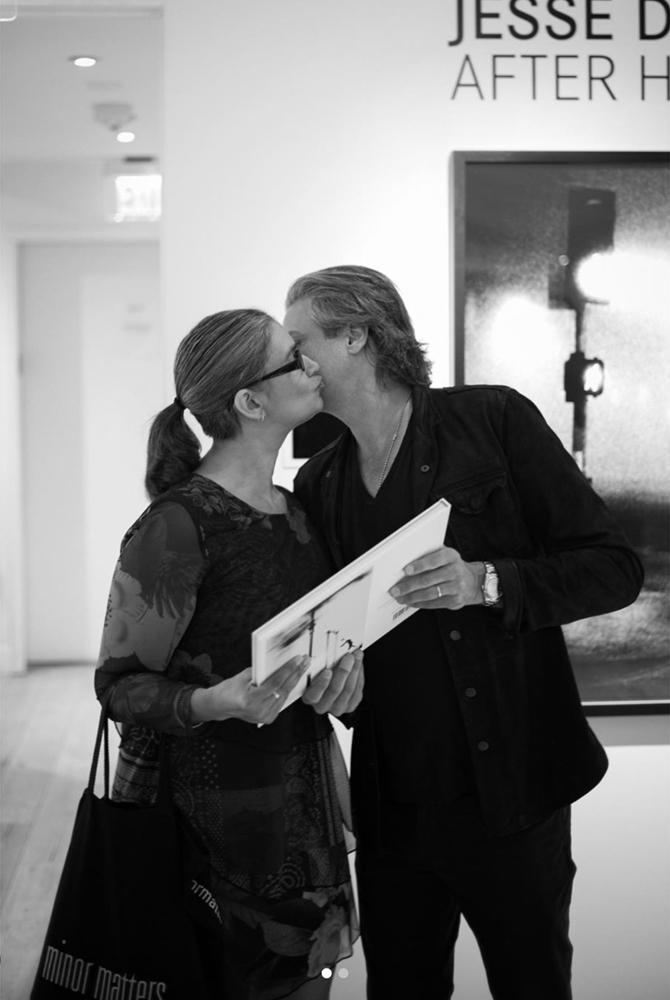
Michelle Dunn Marsh with Jesse Diamond, holding a copy of White Noise (Minor Matters, 2019), Leica Gallery LA, September 2019. Photograph by Leah Levine.
How many books do you publish a year?
Given our pre-sales model we do not know how many books we will actually publish each year, but we launch 3-5 books a year for audience consideration.
How do you choose which projects to publish? Do you have a specific focus?
We predominantly publish contemporary art, with an emphasis on photography. We look for projects relevant to / reflective of our time, and consider how the project will be seen through the lens of history. We consider who our authors are, where they are based, and how centering their viewpoint can be additive to American culture as a whole. We also consider our pre-sales process, and if an author has the potential of sufficient audience reach (specificity of project, duration of artmaking, some demonstrated visibility) to reasonably undertake the goal of pre-selling 400-500 copies. Excellence in craft has always been an area of evaluation, but it is increasing in importance as we look forward. And with all of that stated, sometimes we throw all the stated guardrails out the window and take risks, because we believe that is an inherent element of this business, and of why we publish.
How can an artist get their work in front of you?
We usually attend portfolio reviews at least twice a year, and that is a great way of beginning a dialogue.
Two years ago we also introduced a consulting service, www.proposaltopublish.com (PTP) that is in lieu of us accepting unsolicited proposals. We did this for three reasons. People kept sending us proposals, even when we were very clear in saying we did not accept them. So it seemed there was a desperate need for response. Two, we felt it was important to educate people about the publishing process, and the investments involved. Lastly, we felt it important to be affirming to potential authors having the courage to put their work out into the world. Instead of simply saying “no, this is unlikely to be a good fit for us” (which is 90% of what the “slush” pile response is for most publishers) we wanted to help people understand why they could probably find their way to a self-produced book, and feel really good about it. If we think a project has commercial publishing potential with us or another publisher, we inform them as to the challenges and financial realities they may face. We haven’t heavily promoted PTP, yet the people who find their way to it and utilize it have been really positive about it, so we’re glad to be offering that service.
Do you have any advice for photographers?
Make great work, and take joy in it. Understand why you desire a book, and if it is primarily for yourself, that’s okay! Find your way to a book in a manner that does not leave you in insurmountable debt. If you believe there is an audience for what you have created, be patient. Publishing can be like a partnership, and you might have to go on a few coffee dates to find the right fit. It is, no matter what, an investment of time and energy and, increasingly, money. Get informed, and invest wisely.
What is the typical timeline of a project, from the beginning to the finished product?
It can be anywhere from two to ten years. : ) When we launched Minor Matters, I had a list of ~thirty authors / projects in mind. Some of those we realized; some books came to be through other publishers, which was great (I just wanted to own the books, it mattered less to me who made them, as long as they were made well). As we look to the next ten years and how the industry is changing, we will be adapting and changing as well, so timing could change also. But in general, and in our publishing agreements, there is a six-month development period to generate the book’s concept, look and feel, a three-month pre-sales cycle, and then if the book moves into print, another six to nine months to complete. We aim to deliver books within a maximum of twelve months of launching it for pre-sales, but shipping delays and production issues have occasionally affected that.
How collaborative is the design process with the artist?
Our authors are engaged in the editorial and design process, and we are driving it. Our shared goal is to make the best possible book we can, one that holds their work authentically, and delivers it to a broader audience. I was a professional visual book designer for seventeen years before launching Minor Matters, and I still very occasionally take on design projects. I treat our authors with the same professionalism as any of my clients. Some authors have a strong sense of the nuances of book design; others don’t. Many potential authors ask about collaboration, but sometimes people want control of something they don’t necessarily know how to do, and that rarely makes for a better book. We work with great authors, and we value their expertise. We expect the same in return. I’ve found that when there’s mutual respect, collaboration flows naturally.
How is the financial side of the project structured between publisher and artist? Does the artist contribute to production cost?
No, the author does not directly contribute cash to production costs. Our authors are responsible for engaging in the pre-sales process with professionalism and respect, and if the book moves forward, delivery of their high-res files and matchprints, and any text or captions determined. Authors receive 50 to 100 copies of the first printing, and royalties on sales over 1,000 copies. Some authors have chosen to purchase additional books, but that is only done in discussion with us. We have on occasion bought copies back from our authors to continue selling their book.
What support do you give artists in terms of marketing or distribution? Do you attend book fairs?
We do press releases when we launch a title for pre-sales, and work closely with our authors on soliciting media coverage. Increasingly, due to the decline of traditional media and access through social, media inquiries are often made directly to the author, so we seek to work together with them for the good of the book and its pre-sales process, as well as to protect the rights of the author. We have our own newsletter list, and promote projects through our site and social channels. We also do print catalogs of our backlist, and sometimes attend art and book fairs. There seems to be an increasing perception that art and book fairs exist as a kind of perusal event for audiences to browse, rather than the temporary retail environment we as vendors anticipate. We attend book fairs to sell books. The social aspect of connecting with colleagues and consumers is wonderful, and we also need it to be financially viable.
We manage distribution of our books nationally to independent retailers; we do not sell them through Amazon. Our authors are allowed to sell their copies only with permission from us while the book is available for sale. They are free to sell their copies directly to the public if we no longer have the book in stock.
The financial models of producing books and selling books have shifted rapidly. The decline of traditional media has been one of the greatest changes I’ve noted in the last ten years, along with the increase in the number of imprints publishing visual books. With more and more promoted online (including our books!) it can be tough to reconcile what you see on a screen with what you receive in your hands. We are invested in the craft of printing, and in the reproduction of art to give the reader an experience in keeping with the author’s intention. Increasingly that means when books ship we receive notes from people telling us what they’ve gotten is “way better than they expected!” It is a somewhat dubious compliment, but speaks to the wide range of what is produced and delivered at a particular retail price point. Given our pre-sales model, and the engagement we seek from our co-publishers, we want to over-deliver whenever possible.
Michelle Dunn Marsh is a bi-coastal American of Indo-Burmese and Irish descent. She conceived, and with Steve McIntyre co-founded Minor Matters, a collaborative publishing platform, in 2013. They launched an online consulting service for aspiring authors, Proposal to Publish, in 2020.
Dunn Marsh is the author of Seeing Being Seen: A Personal History of Photography (Minor Matters, 2021). She has worked in visual publishing for nearly thirty years, and has held leadership positions at Aperture Foundation, Photographic Center Northwest, and Chronicle Books. She was a tenured professor in graphic design at Seattle Central Community College, and remains a committed educator, teaching masterclasses and lecturing internationally. She holds a BA from Bard College, where she is an emeritus member of its Board of Governors, and a MS in Publishing from Pace University.
Posts on Lenscratch may not be reproduced without the permission of the Lenscratch staff and the photographer.
Recommended
-
Earth Week: Hugh Kretschmer: Plastic “Waves”April 24th, 2024
-
Earth Week: Richard Lloyd Lewis: Abiogenesis, My Home, Our HomeApril 23rd, 2024
-
Earth Month Photographers on Photographers: Jason Lindsey in Conversation with Areca RoeApril 21st, 2024
-
Earth Month Photographers on Photographers: J Wren Supak in Conversation with Ryan ParkerApril 20th, 2024
-
Earth Month Photographers on Photographers: Josh Hobson in Conversation with Kes EfstathiouApril 19th, 2024

